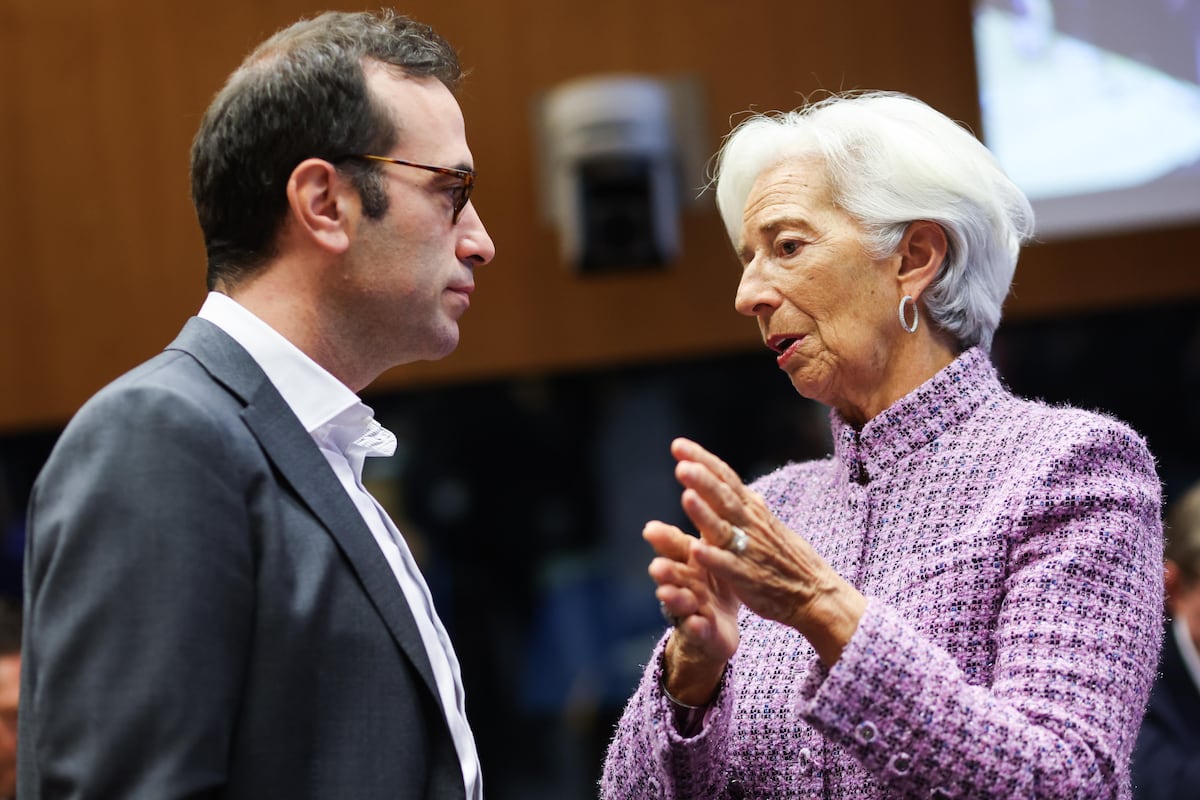The ECB no longer fears a September inflation trap: everything points to a new rate cut | Financial markets

“Que sera, sera,” Christine Lagarde intoned in Spanish at a meeting last month when asked whether the bank would change interest rates in October. No one expected a clear answer. Of course, given the speed at which events are unfolding, not even the ECB President herself will know for sure what will happen, but throwing a cane is a way of searching for an unlikely mistake or an underground clue among the monotonous rhetoric of caution. and containment. He didn’t take the bait. At the time, it seemed that Frankfurt’s response would be to pause in October until it could gather more data on price movements, and Lagarde, as if to anticipate future overly euphoric headlines, even warned that they would not base their decision on statistics alone. and insisted that September could be the month trap for inflation. The thesis was that there would be a clear but ephemeral drop: in the latter part of the year it would be erased by the base effect of energy prices, which fell sharply in the last half of 2023.
The first part of the scenario was fulfilled: eurozone inflation fell sharply in September to 1.8%, below the bank’s target for the first time in three years. What’s surprising is that the ECB no longer appears to be afraid of being caught in the middle: price moderation coupled with greater uncertainty about economic growth, reflected in statistics such as the PMI, which measures manufacturing activity, which fell to its level in September. worst level. The industry’s woes are particularly acute in Germany, which is in recession (while its main stock index, the Dax, ironically, is trading at its highest), leading to a change in tone, most notably in Lagarde’s speech to the European Parliament. a little over two weeks ago. There, before members of the European Parliament, he expressed “reinforced confidence” that prices were moving towards a stabilization phase.
This was not the only sign. A few days later, Bundesbank President Joachim Nagel, considered a hawk and therefore reluctant to cut rates too quickly, said he was willing to discuss a rate cut in October, the third this year, possibly spurred by his country’s economic weakness. “We cannot ignore the obstacles to growth,” another German ECB official, Isabelle Schnabel, admitted in Freiburg earlier this month. In addition, the release of the minutes of the September meeting showed that slowing economic growth was a particular concern in Frankfurt, which ultimately dispelled doubts: markets expect rates to be at 3.25% this Thursday. And the euro, which is at a two-month low against the dollar, no longer takes this scenario into account.
“There will be no surprises,” says bluntly Lorenzo Codogno, Italy’s former finance minister, who sees next year’s horizon far less clear. “It is very likely that another reduction will occur in December. On the other hand, the continuity of the 25 basis point (decline) rhythm in each meeting is far from guaranteed in 2025,” he points out. Pimco’s governor says a weaker-than-expected macroeconomic outlook will keep the Board from going into immobility planned for October. Analysts at Swiss bank Julius Baer agree. “Moderate inflation of 1.8% in September and bleak growth prospects provide compelling arguments for further rate cuts,” they explain.
ING’s Carsten Brzeski is somewhat more reserved in his belief that a rate cut will happen, but there are arguments against it. Remember that Schnabel emphasized the fact that monetary policy can do little to address structural weaknesses in the economy—for example, the crisis in the German auto industry due to declining demand. And that the fall in inflation in September did not take the ECB by surprise, which was already expecting it, so it should not push it to change course. Finally, he argues that service sector inflation, one of the biggest challenges, remains high based on some of the national data already released.
The delicate balance between hawks and doves
The ECB’s leadership has so far managed to achieve broad consensus around its decisions. Recently, only the Austrian hawk Robert Holzmann dared to break the unanimity – he voted against the June cuts. But the days of this world may be numbered. At least that’s what Ruben Segura-Cajuela, Bank of America’s chief European economist, thinks. “While most ECB statements support, or at least are not opposed to, a rate cut in October, disagreement over what comes next appears significant.” Slovakian Peter Casimir and Belgian Pierre Wunsch were the only ones who publicly expressed certain doubts about the new reduction in the price of money, citing rising oil prices as an argument.
“Now this (disagreement) is likely to be exacerbated by renewed geopolitical risks and the recent rise in oil prices,” says Segura-Cayuela. Rising prices for a barrel of crude oil due to a possible escalation of conflict in the Middle East have added to the noise in the days leading up to the meeting, which moves to Slovenia this Thursday, but Israel’s announcement that its retaliatory measures against Iran will not include Oil companies , along with lower demand from China, have driven the price of a barrel of Brent oil down from the $81 it topped this Wednesday to $74, already close to the level it was at before Iran launched ballistic missiles against Israel two weeks ago.
The ECB’s decision will also be closely watched by mortgage holders and those interested in requesting a loan. The Euribor rate is falling sharply – around 2.74% – leading to a reduction in premiums and encouraging a mortgage war between banks, with some clients already receiving finance at interest rates below 3%. Analysts believe that after two years without respite, that oxygen could fuel real estate activity, which could also make it difficult for prices to come down.
